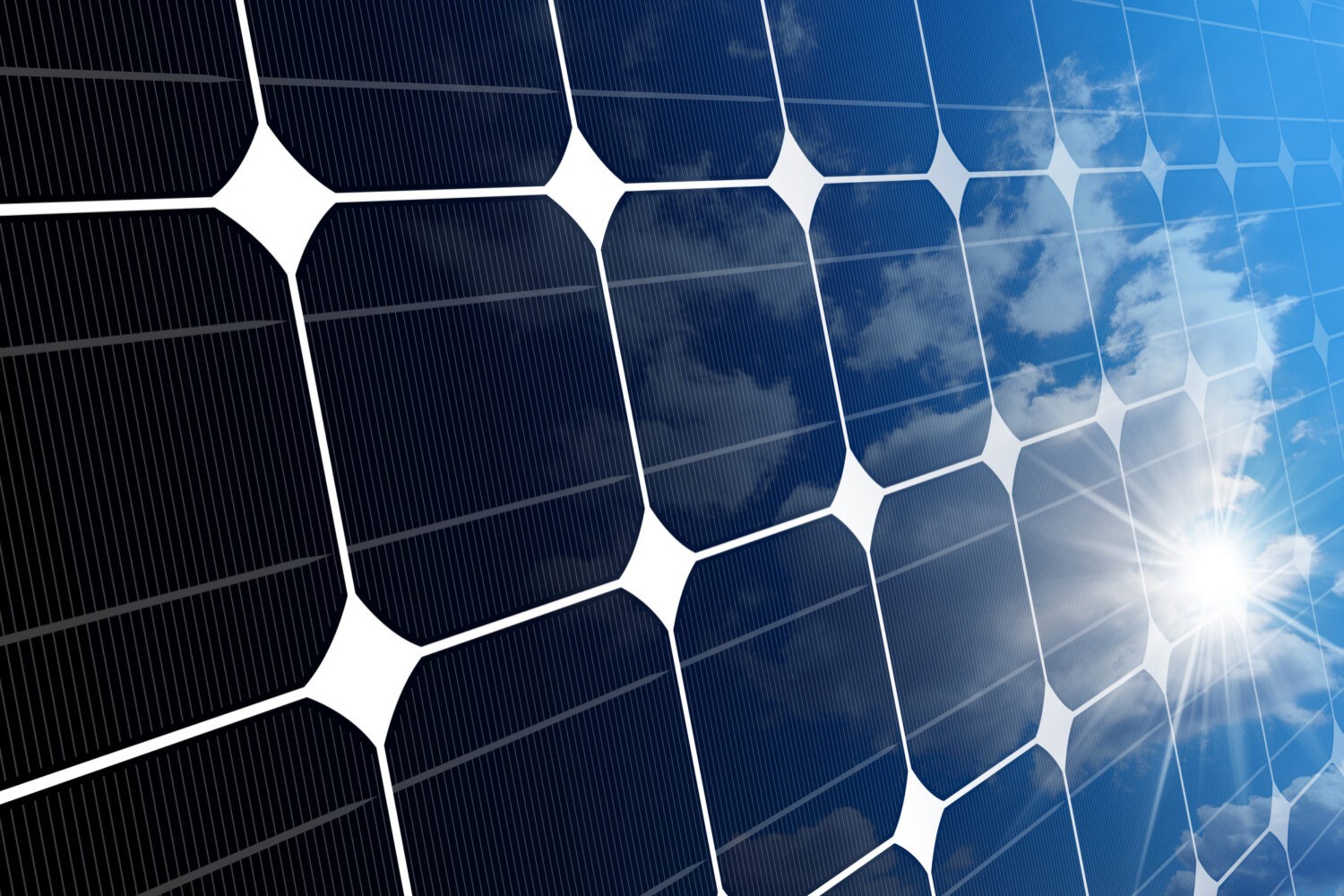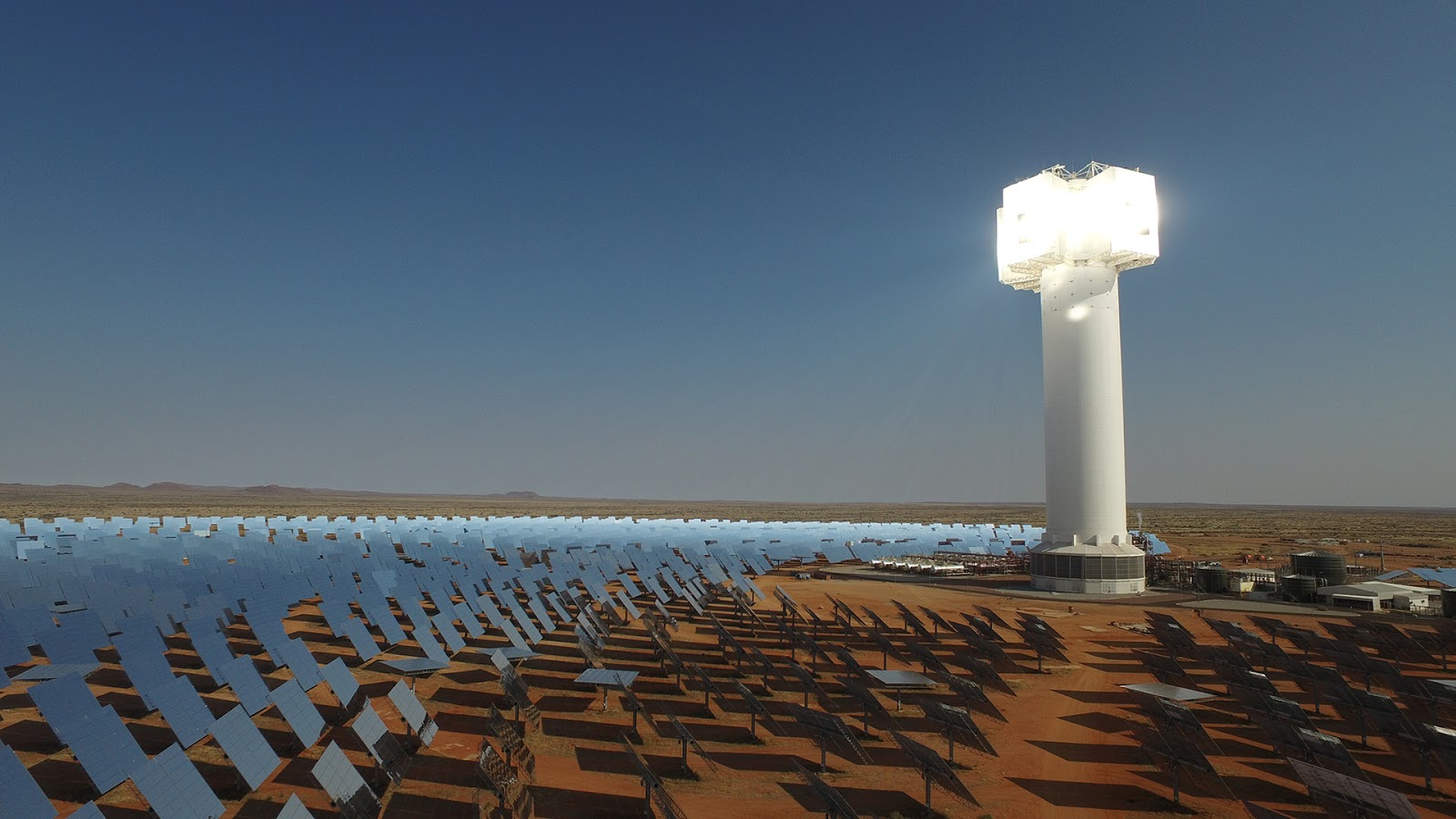
Thermodynamic solar is getting big
From Archimedes burning mirrors to future solar power stations
Concentrated solar power (CSP), or thermodynamic solar energy, is a technology that is increasingly driving investments from many countries. It refers to power plants which utilize energy from the sun and converts it into electricity.
The operating principle is the same as parabolic troughs, known since ancient times and used for building plants from 1970s. These troughs, also known as line focus collectors, are composed of a parabolic shaped reflector that concentrates sunlight in a “focal point”, to generate heat at very high temperature (up to 600°C) to generate steam. The steam then ignites turbines to produce electricity.
One of its properties is the use of thermal energy storage, which is capable of 15 hours of electricity production at full load without sunlight. The system is able to decouple the collection of solar from the production of electricity. This technology is the only one among the ones based on non-programmable renewable sources that allows to program production to meet the energy demand.
It’s the only technology, based on non-programmable renewable sources, that allows “on-demand” productions
Solar thermodynamic energy has a long history. It was likely discovered in 212 B.C. in Italy, to be exact in Sicily, during the siege of Syracuse from the roman consul Marcus Claudius Marcellus.
To defend the city, the scientist Archimedes had the brilliant idea to use mirrors – known as “burning mirrors” – to set the Roman fleet alight and burn it.
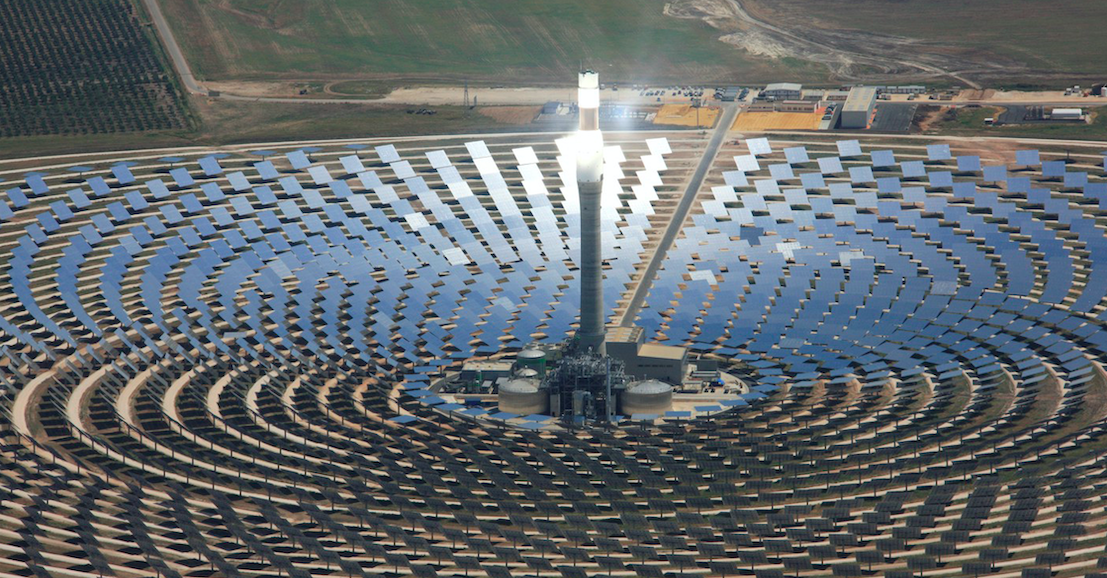
Solar thermodynamic power plant in Seville, Spain (DMA Europa)
The first CSP plant built in Italy will soon be inaugurated in Partanna (Trapani) and Misiliscemi. In the two projects ENEA has the role of technical supervisor, the Italian companies SOL.IN.PAR. srl and Stromboli Solar srl are the clients and FATA spa of the Danieli group builds the plants.
The Partanna plant will have an installed capacity of 4.26 MWe and will be capable of producing electricity for over 1.400 families, about 30% of the population of the municipal area.
Starting from 2019, this technology is among the strategic themes of the Research of the Electric System, the three-year research program on new energy technologies funded by the Ministry of Economic progress.
In this context, ENEA presented a three-year research plan on the main components of concentrating solar plants, which envisages the study of new heat transfer fluids, the development of innovative surface coating materials for receiver tubes and the construction of advanced thermal storage systems.
Solar thermodynamic energy has a long history. It was likely discovered in 212 B.C. during the siege of Syracuse by Archimedes
Furthermore, by 2021 an experimental platform for the characterization of components for the supply of industrial heat at medium and high temperatures will be created at the ENEA Casaccia Research Center (Rome).
While in Italy large-scale plants (over 20-50 MW) are difficult to build due to specific geographical conditions and authorization restrictions, the countries where this technology has found greater application development worldwide are Spain and United States, which leads the ranking with the highest installed and operating power, with 2.3 GW and 1.8 GW respectively; followed by China, Morocco and South Africa.
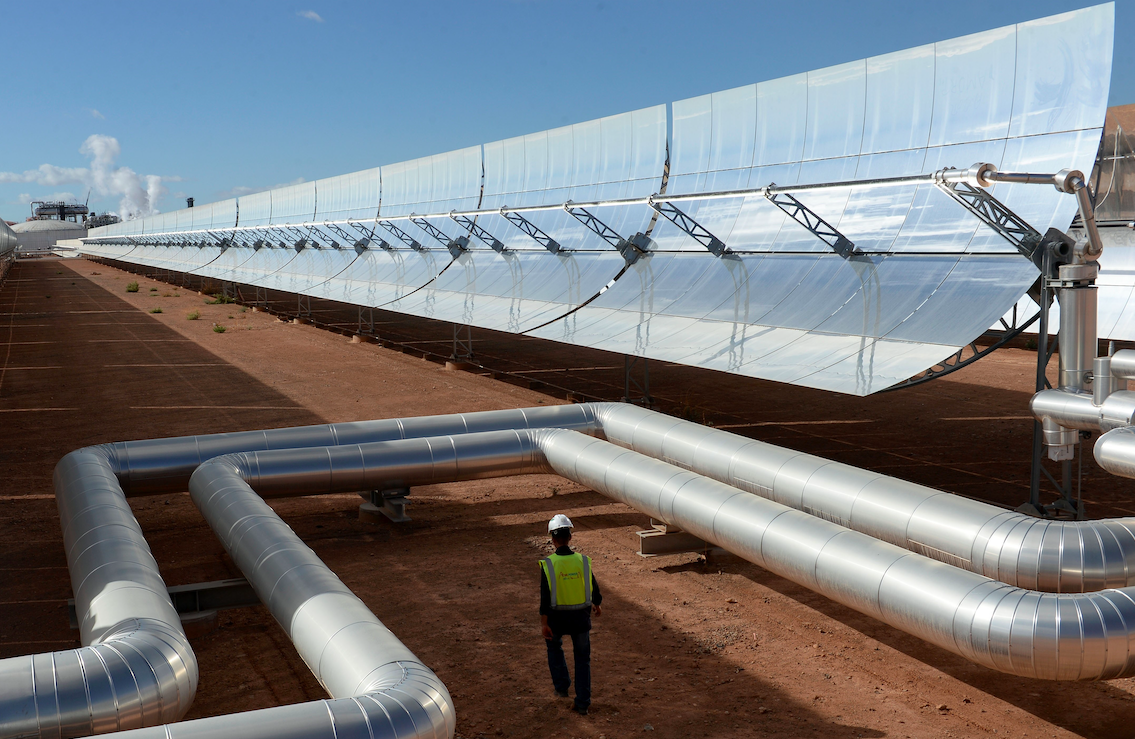
Solar thermodynamic plant in Morocco (Npr)
The global distribution of CSP plants depends especially on favourable geographic conditions, such as dry climate with low precipitation and cloudiness and not so high latitudes. A further boost to the development of this technology also comes from the United Arab Emirates and India, countries at the forefront with new plants under construction of 700 MW and 290 MW.
In the next decades, the International Energy Agency expects a substantial increase in the share of energy produced by thermodynamic solar, which should cover more than 11% of the global primary energy needs by 2050.
Energy by thermodynamic solar is supposed to cover more than 11% of global primary needs by 2050
2019 was a positive year for solar thermodynamic energy generation, which is globally increased of 34%, surpassing the annual increase of 24% between 2011 and 2018. Nevertheless, current progress isn’t enough to reach the goals set with Sustainable Development Goals by 2030, according to Tracking SDG7: The Energy Progress Report.
If on one hand production keeps increasing, on the other hand it’s not as fast as expected. Last year, a statistic by International Renewable Energy Agency (IRENA) revealed that, although global installed capacity has increased more than four times since 2010, at the beginning of 2019 it reached 5,5GW, which photovoltaics already reached in 2005.
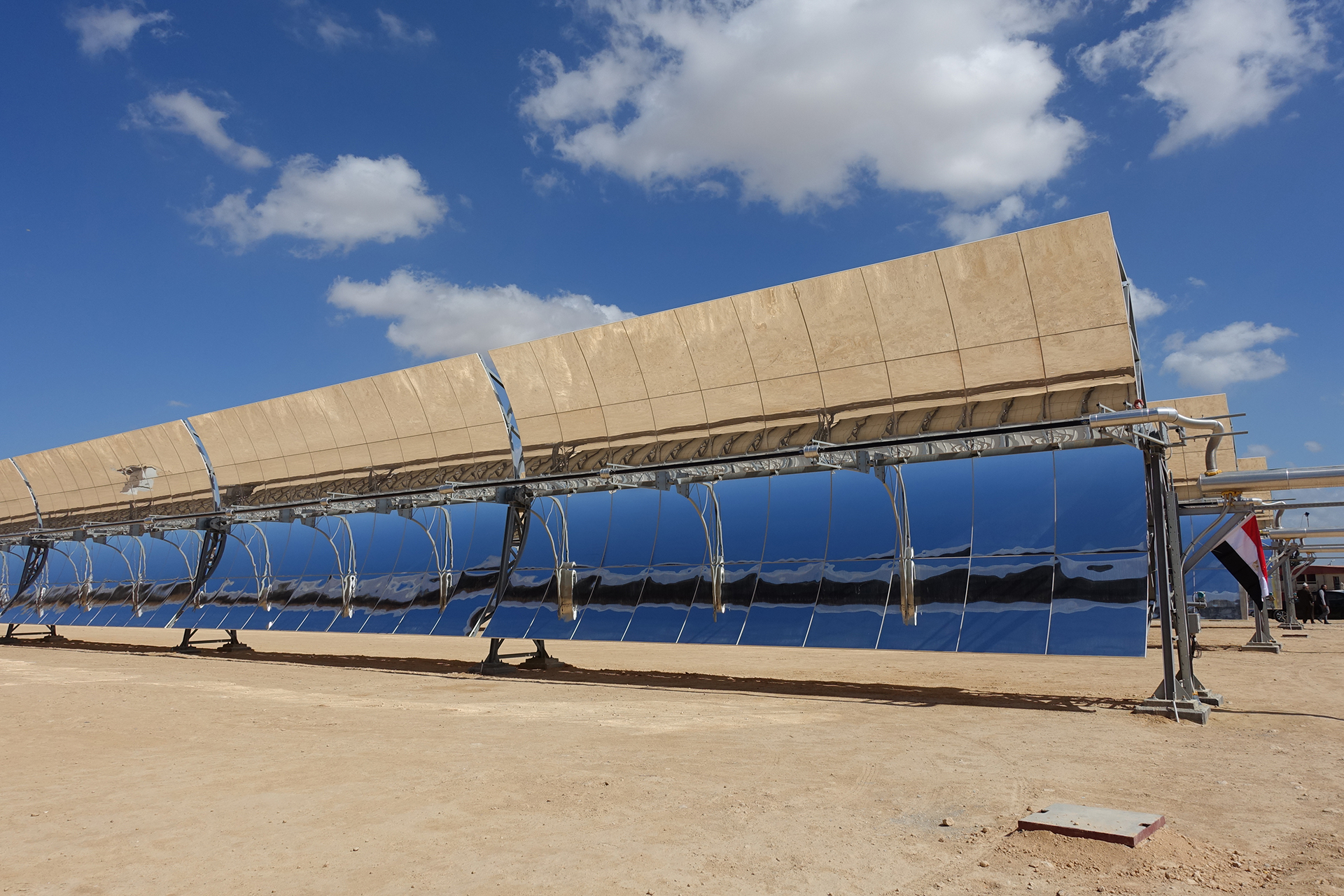
Thermodynamic Solar Plant in Alexandria, Egypt (MATS)
The growth slowed mostly because of photovoltaics, but also of the specific nature of the sector’s economy. The cost of power plants depends on the radiation levels where they are located, but also on the size of the plant, which means that the most competitive plants are those located in places with favourable weather conditions and that need big initial investments.
That is why solar thermodynamic technology is attractive only for those markets that can count on sunny weather and aren’t afraid of big investments.
However, it is estimated that CSP plants will be capable of producing electricity 24/7 and be competitive by 2025-2030, thanks to the growth of thermal energy storage. North America will be the largest producer of solar thermodynamic energy, followed by North Africa and India. North Africa will probably export half of its production in Europe, the second largest consumer.

